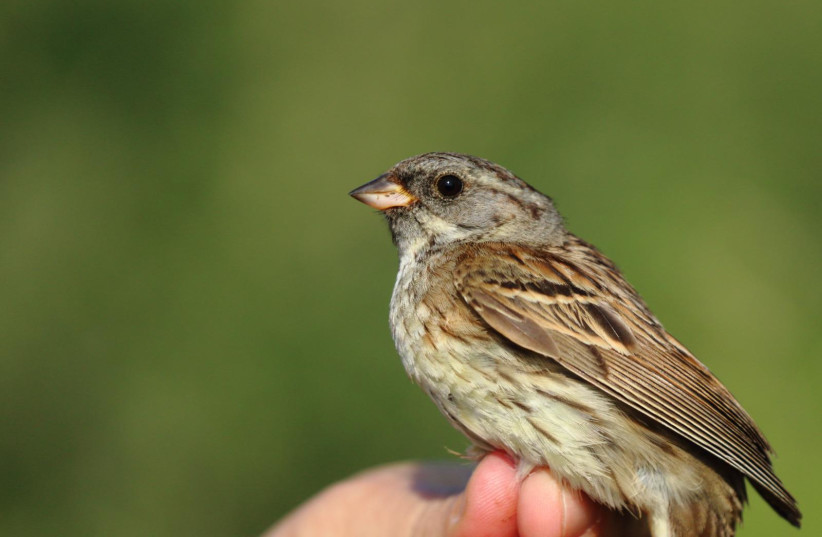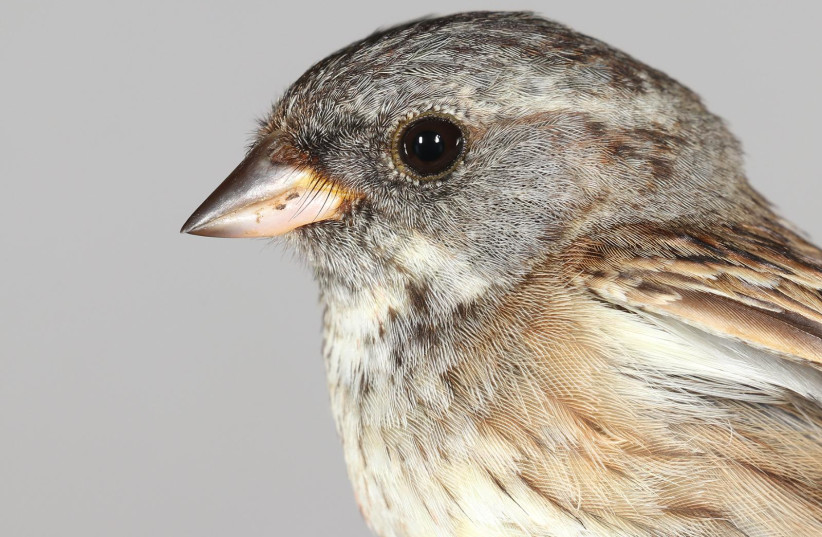The black-faced bunting, an extremely small songbird weighing roughly just 17 grams, was sighted for only the second time in Israel last week as part of a research project conducted on Carmel beach by Chen Favish, senior ornithologist from the Nili and David Jerusalem Bird Research Station.
Favish identified the bird in the field, but the identification was not certain at first. A recording of the bird's calls led to the confirmation of the identification and a successful attempt to locate it again a few days later, this time using fog nets, which are used to ring the birds.
"When ringing [a bird], we attach marking rings to the birds' legs for research purposes. After the bunting was captured, it was marked with an identification ring, measured, weighed, photographed and released back into the wild. Later it was documented again by other birders who came from all over the country to witness the rare visitor," explained Dr. Yosef Khayat, Director of the Ringing Center at the Society for the Protection of Nature.
Where does the bird normally live?
The Society for the Protection of Nature added that the black-faced bunting is a small songbird that usually has its nests in eastern Siberia, northern Mongolia and northeastern China.
The bunting leaves frozen Siberia in the winter months and normally spends the cold season in Southeast Asia, mainly in southern China, Vietnam, Laos and Myanmar, where more favorable conditions prevail at this time of the year.

"This species, like other Siberian species, has a known history of unusual phenomena in the normal migration field, in areas where they are not expected to be found, mainly in Western Europe. Only in the last month was the second individual recorded for Spain and the eighth for England. These unusual details, also known as 'occasional', maybe the first clue to the development of new bird migration patterns. It's especially exciting to meet a bird that has traveled thousands of kilometers from where it should be," adds Favish.
The first time a black-faced bunting was captured in Israel was by the team of the Hefer Valley bird research station, on October 31, 2021.

"One of the biggest challenges in the conservation of migratory birds is the fact that they distribute their annual cycle over large geographical areas, shared by many countries. The Ornithology Center of the Society for the Protection of Nature works to preserve wet habitats, used by birds from around the world - only by a global effort can we to preserve these migratory species," concludes Dr. Yoav Perlman, Director of the Ornithology Center at the Society for the Protection of Nature.
